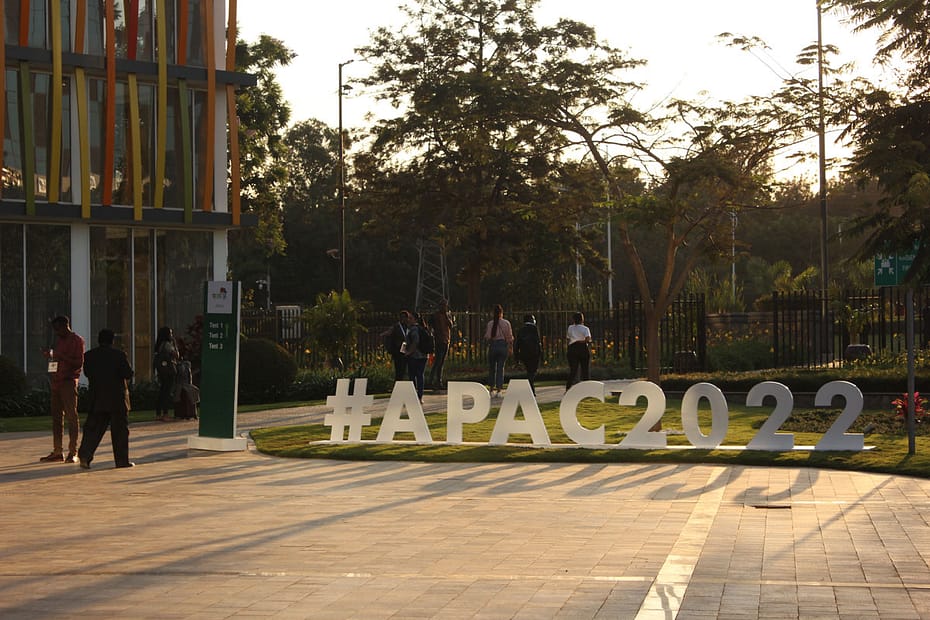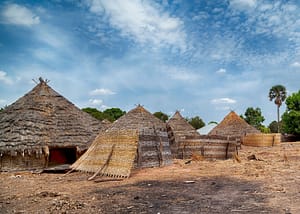Addressing power imbalances in community conservation
One of the most challenging aspects of community-based natural resource management (CBNRM) is walking the tightrope between the many stakeholders involved in these programmes. The difficulties experienced in community conservation can often be traced back to power imbalances, both within communities and between them and the government, civil society, donors and the private sector.
Addressing power imbalances in CBNRM was thus highlighted as one of the key opportunities in the recently published Community Conservation Horizon Scan. This issue was also highlighted during a two-day workshop for Indigenous Peoples and Local Communities (IPLCs) held prior to the African Protected Area Congress (APAC) in Rwanda, Kigali in 2022.
In the IPLC Declaration produced from this workshop, the delegates addressed several key stakeholder groups: governments, donors, conservation organisations, researchers (or academia) and media. Although not included in the declaration, another key stakeholder group has a substantial influence on CBNRM: the private sector (most often in the form of tourism or hunting operators). All of these stakeholders play important roles in creating and perpetuating positive or negative power relations within CBNRM.
Some of the key action words from the IPLC declaration highlight include: respect, recognise, protect (community rights), empower, engage, fund, and decolonise. In short, the IPLCs gathered at APAC felt that the time had come for a change in the balance of power in community conservation. In practice, power is linked to two key issues: rights and resources. We unpack some of these issues here.
The effect of rights on power imbalances
The right to use land and the resources on that land has a major impact on power relations between communities and other stakeholders. In most countries in Southern Africa, communities live on what is known as ‘communal land’, which is owned by the state and governed jointly by traditional authorities and relevant state bodies (e.g. land boards). This means that individual households have permission to live on the land and use grazing and water resources, but they do not own it.
Not owning the land reduces each household’s decision-making power over the land and associated resources. It also increases their vulnerability to dispossession and eviction. Indeed, many areas were designated as National Parks by evicting the people who lived there. While evictions are less likely today under independent African governments than they were under colonial governments, they can and do still occur due to insecure land tenure.
The land tenure situation is changing in Mozambique where people are now able to register individual plots of land and apply for title deeds to that land. Since CBNRM is still in its early stages of development in that country, the other nations in Southern Africa will no doubt watch with interest as Mozambican communities start exercising their rights over land. Perhaps these rights will lead to greater decision-making power over their natural resources.
The effect of resources on power imbalances
In countries where CBNRM programmes have been established, rights to use natural resources have been devolved to varying degrees. In all countries, quota setting for game or plant utilisation is mediated through the government and local conservation organisations. In some countries, the government exercises greater control over how those quotas are used (e.g. by selecting hunting operators) and how the subsequent income is divided between the arms of government and community-based organisations.
In all Southern African countries where CBNRM is currently implemented, individual households cannot legally make decisions about how much game, timber or other valuable plant products they harvest in each season. Even their representative governing bodies (e.g. conservancies, trusts or boards) cannot make these decisions without government approval.
Devolving some rights over natural resources has been the basis for CBNRM operating across Southern Africa for the last few decades. Natural resources are not the only kinds of resources that generate negotiating power, however. Financial and human resources available to the different actors make a substantial difference.
Donors and the conservation organisations they fund play a major role in determining how CBNRM evolves over time by preferentially funding projects that align with their goals. Similarly, the private sector will invest in community conservation areas that appeal to their particular markets. CBNRM is difficult, if not impossible, to implement in areas that do not feature on donor priority lists and/or are not attractive destinations for tourists or hunters.
The main human resource constraints are related to skillsets rather than size of the workforce, given high rates of unemployment across the region. In the absence of skilled workers in rural areas (particularly in management, finance and marketing), private sector companies and conservation organisations tend to fill higher-paying roles with people from outside the target communities. Budget limitations among community-based organisations also result in low wages for managers, rangers and other staff.
Rights and resources bring greater responsibilities
One of the main excuses for not granting greater rights to communities is the perception that they lack the governance capacity needed to shoulder the extra responsibilities that come with such rights. Examples of financial mismanagement, in particular, abound within CBNRM. Other governance issues include unfair benefit sharing through the capture of resources or job opportunities by the local elite. While these examples are used to limit rights, the underlying causes are often a result of historical power imbalances.
In many cases, the governance structures that prevail in CBNRM programmes were copied and pasted from elsewhere, leaving little space for innovation or adaptation to local leadership structures. These governance systems often reflect the ideals of conservation organisations (and their donors) or government legislation rather than systems that would be locally preferred.
To complicate matters further, many people living in communal lands today were forcibly relocated to these areas by colonial governments, thus disrupting traditional leadership structures. Each community is unique and is often composed of sub-groups with different interests and histories that are invisible to outsiders who tend to view communities as homogenous entities. Consequently, external organisations seeking to improve governance structures can all too easily make them worse by ignoring local realities.
Conclusion
Solving the rights + resources + governance equation in CBNRM will certainly not be easy, but it is imperative if current power imbalances in community conservation are to be rectified. There is no one roadmap to success or one perfect model that can be copied and pasted into every community, but adhering to a few general principles can help external stakeholders find ways to truly support communities.
Ultimately the goal should be to move away from currently practised community-based conservation towards community-led conservation, whereby the balance of power is shifted towards communities. While this shift requires some policy changes and technical fixes in governance and management systems, it must start with changes on a deeper level.
In their recent report, Maliasili considers some of the issues that local or community-based organisations face when entering into partnerships with more powerful actors such as international conservation organisations and donors. The local organisation leaders they interviewed provided several suggestions for improving these relationships that reflect the concerns raised by IPLCs in Rwanda.
Mutual respect and trust are paramount, along with a willingness to experiment with new ideas and break away from short-term, project-based support for communities towards long-term partnerships. In equal partnerships, success is co-defined and responsibility for achieving that success is shared. These initial steps can go a long way to adjusting power imbalances at the local level while working towards better policies and practices that could ultimately change the face of CBNRM across Southern Africa.







